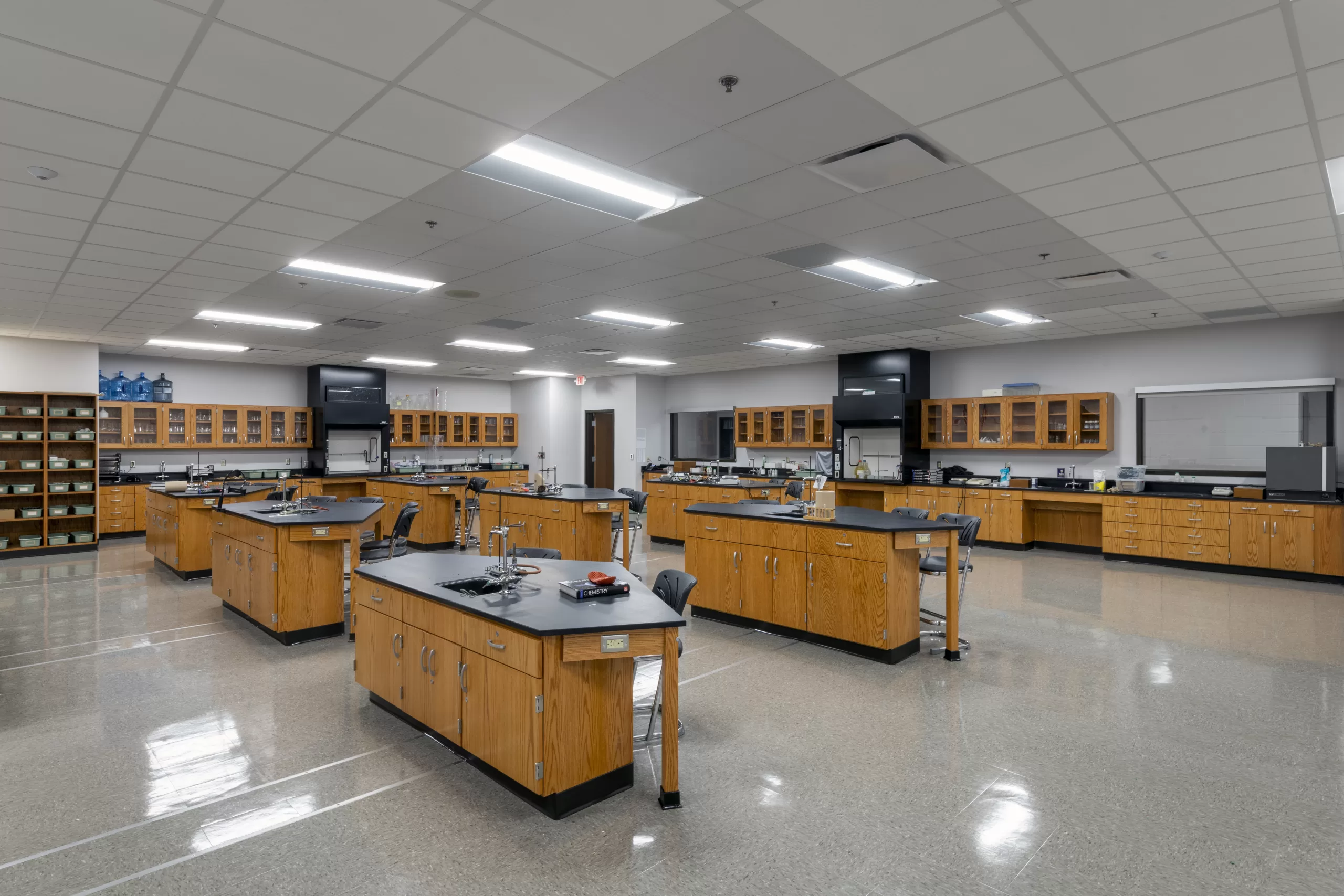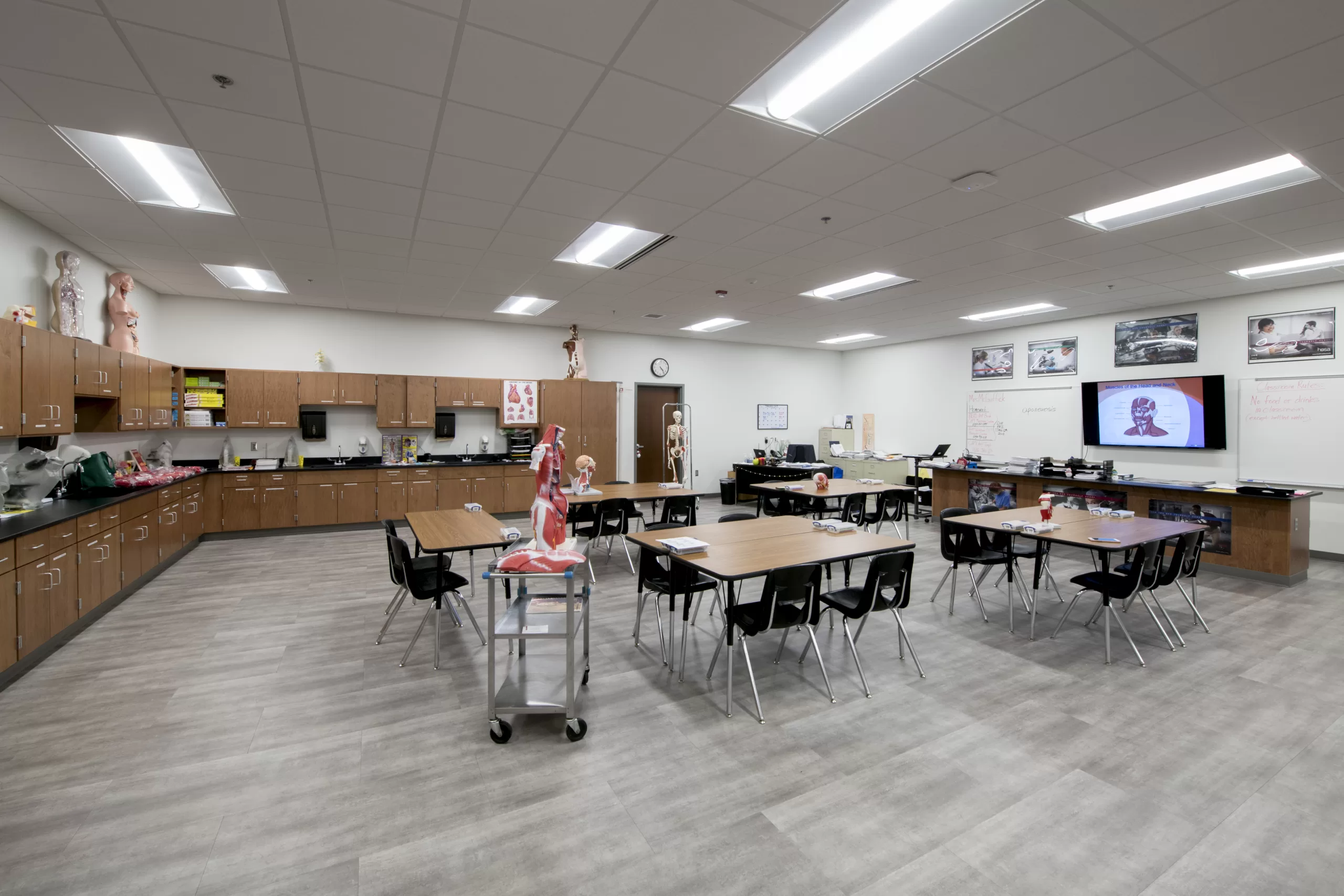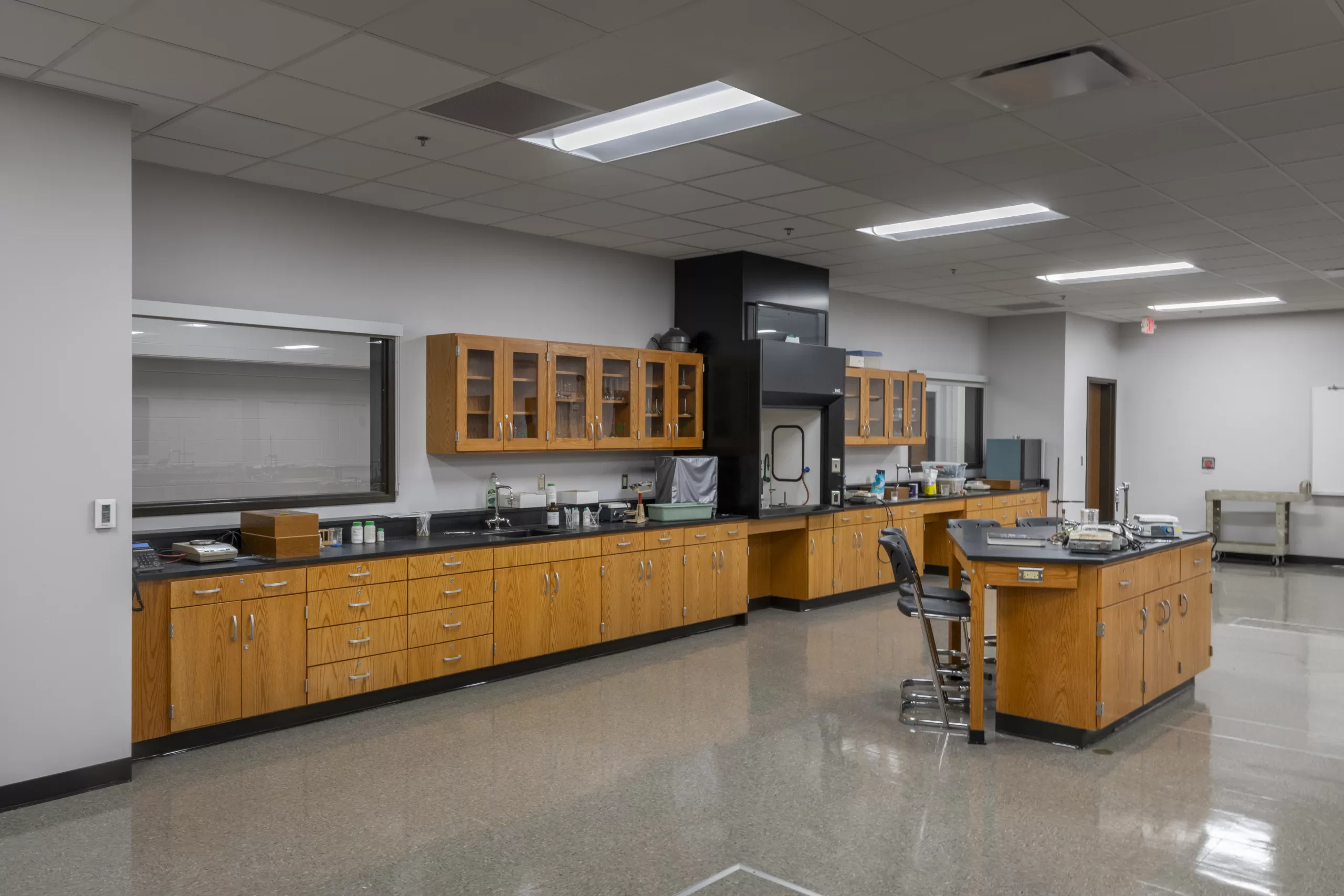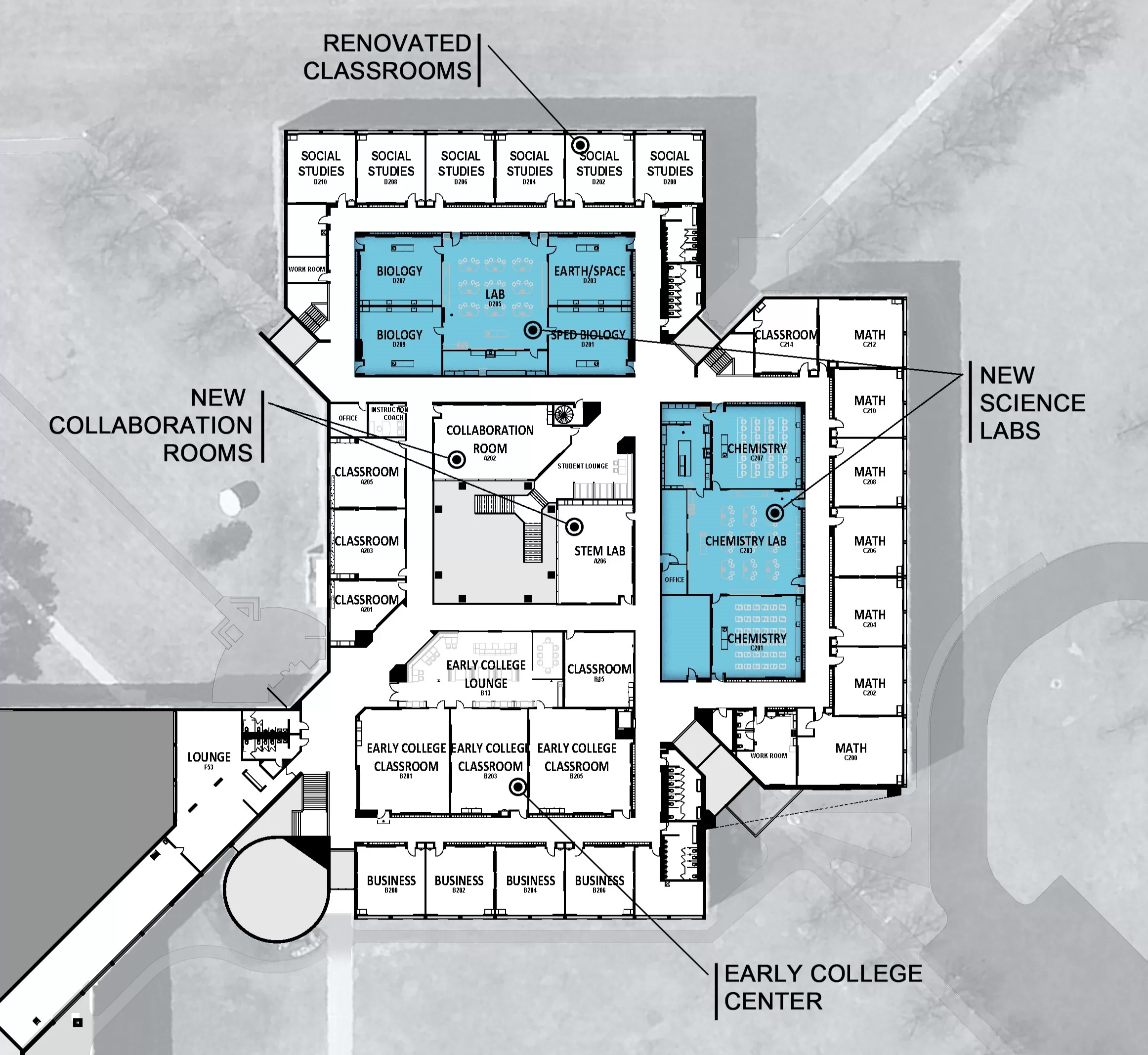Supercharged Science Labs: Efficient, Cost-Effective, and Fun for High Schoolers!
By Jeremiah Hatfield, RA
February 12, 2024Post Tagged in

|
What do you recall from your high school science labs? Mr. Hole, my freshman biology teacher, had taught so long at our high school that he was encountering second generation students. Just as he had for the previous generation, Mr. Hole loved to have us reproduce illustrations of anatomies that prepared us for dissections. That year, we did seven different dissections, starting with starfish and ending with the capstone of a pig fetus. Seven times that year, we got to use the black epoxy desks at the perimeter of the classroom with the fancy lab equipment. The following two years of high school were filled with chemistry, which led to an increased amount of lab work every other week. |

|
Indiana’s High School Course Titles and Descriptions published by the Indiana Department of Education states that today, a minimum of 25% of total instruction time should be devoted to laboratory activities. Lab activities can range, and don’t always require the traditional use of epoxy countertops, sinks, gas apparatus, or glassware. In fact, when checking with local area high schools, it was reported that heavy lab use was typically incorporated into the curriculum less than once a week (slightly more with honors and AP courses). |

|


|
When planning renovations for an area high school, a district challenged the high school staff, asking if there was a better way to plan science labs. An average high school chemistry lab is outfitted with $185k to $220k of additional features, including casework, plumbing, exhaust, and equipment. Does it make sense to have financial investment and square footage locked up on classroom features that sit idle more than they are used? |

|
In the ongoing renovations at Wayne High School, facilities staff and administration led discussions to explore a new layout that would increase room utilization efficiency. In this concept, science rooms would be set up as flexible instruction space. With tables and chairs, the classroom can be modified to accommodate a more 21st century learning environment. According to a recommendation from the science department, each classroom would be outfitted with a small level of equipment along the perimeter that allows students to conduct “light” lab work. Intense lab work would be conducted in a shared laboratory outfitted with lab islands, sinks, gases, fume hoods, glassware, and safety equipment. Chemistry classes would share a dedicated chemistry lab, and biology, physics, and earth sciences would share a second lab. In lieu of six large science labs, Wayne High school will be outfitted with six flexible science classrooms and two science labs. No additional square footage was required for the creation of the two additional spaces, resulting in considerable savings. |

|
